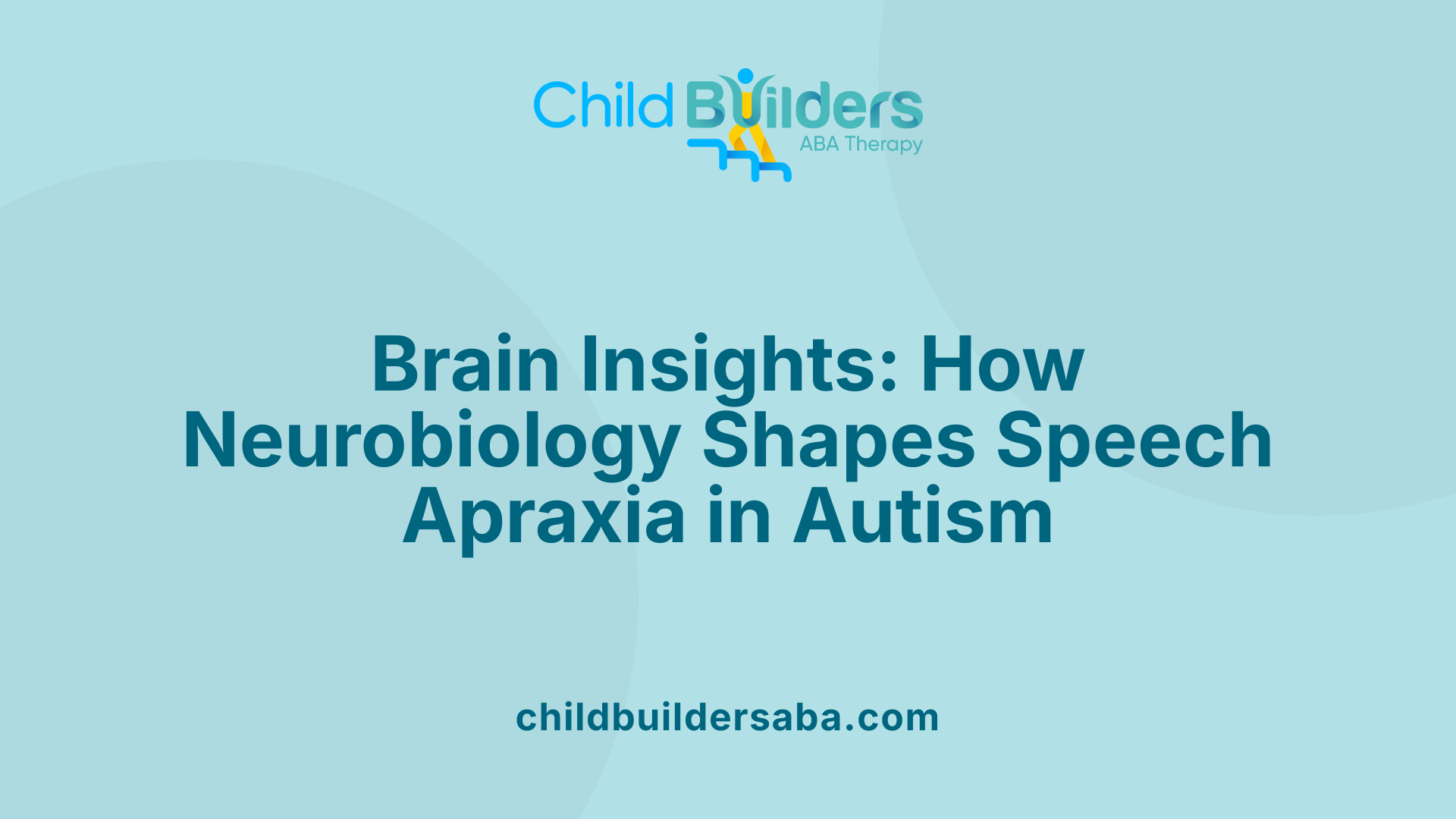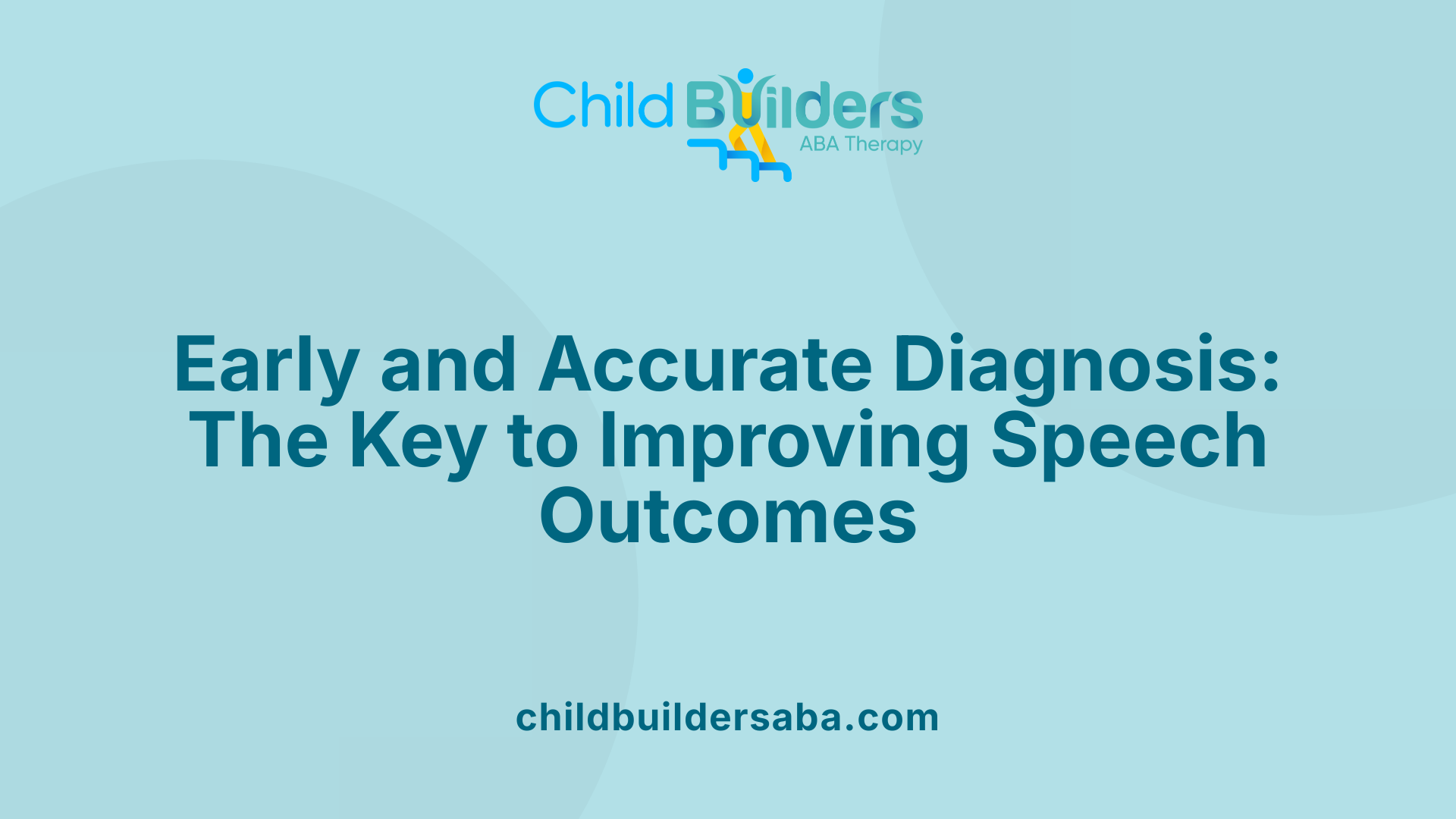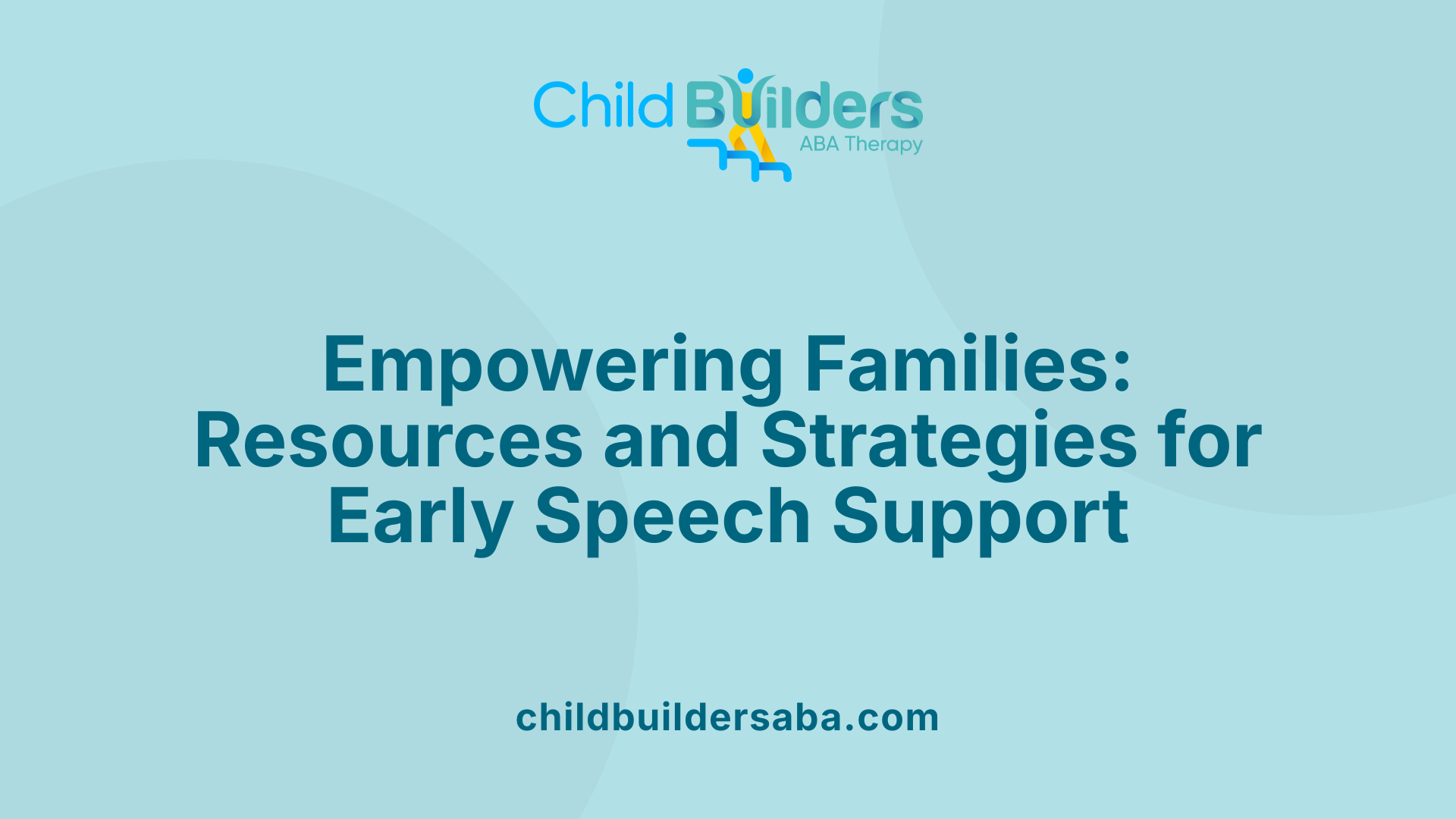Speech Apraxia and Autism

Understanding the Complex Interplay of Speech Apraxia and Autism
Speech apraxia, or childhood apraxia of speech, is a motor speech disorder that affects a significant number of children with autism. Recent studies suggest that up to 65% of children on the autism spectrum also experience apraxia, which complicates their speech and language development. This article delves into the relationship between speech apraxia and autism, identifying symptoms, neurobiological underpinnings, diagnostic challenges, and the most effective, neurodiversity-affirming intervention strategies.
The Nature of Speech Apraxia and Its Prevalence in Autism
What is speech apraxia?
Speech apraxia, also called childhood apraxia of speech (CAS), is a motor speech disorder that affects the brain pathways responsible for planning and executing speech movements. Children with apraxia often know what they want to say but struggle to coordinate their tongue, lips, mouth, and jaw to produce clear sounds. Their speech can be inconsistent, with errors that vary from attempt to attempt, making it hard for parents and caregivers to understand them.
This disorder involves distorted sounds, groping for the right words, and unusual prosody—meaning the rhythm and intonation of speech may sound abnormal. Unlike language delay, apraxia specifically disrupts the motor planning required for speech, not necessarily language comprehension or vocabulary.
How does speech apraxia affect children with autism?
Research shows that apraxia is particularly common among children with autism spectrum disorder (ASD). Many children with autism experience difficulty with speech coordination, and studies estimate that about two-thirds of children initially diagnosed with autism also have symptoms of apraxia.
Children with autism and apraxia may exhibit delayed speech development, struggle with cooing, babbling, and producing speech sounds, and may have inconsistent speech errors. Because some behaviors in autism—like limited use of words—overlap with apraxia symptoms, accurate diagnosis can be challenging but crucial for effective intervention.
Therapies that include motor programming techniques, gestures, visual supports, and engaging activities tailored to the child's interests are often used to promote speaking skills. Early intervention and continuous assessment help in addressing both autism-related communication challenges and apraxia.
Statistics on co-occurrence rates
Multiple studies highlight the significant overlap between autism and speech apraxia. One extensive study found that approximately 64% of children diagnosed with autism also had apraxia, supporting the hypothesis that speech motor planning issues are common in this population.
The co-occurrence rates emphasize the importance of screening children with autism for apraxia, especially in nonverbal or minimally verbal children. Recognizing and addressing apraxia early can result in better communication outcomes and improved social participation.
| Aspect | Statistic | Additional Details |
|---|---|---|
| Co-occurrence in autism | ~64-65% | Up to two-thirds of children with autism exhibit apraxia |
| Apraxia prevalence in general population | 1-2 per 1000 children | Indicates rarity in the wider population, but high in autism |
| Study sample size | 30 children | Ages 15 months to 5 years, with findings applicable to early diagnosis |
Understanding the connection between autism and speech apraxia underscores the need for comprehensive speech evaluations. Tailored approaches that respect the child's neurodiversity and include speech therapy are vital for helping children improve their communication skills.
Understanding the Relationship Between Speech Apraxia and Autism

What is the relationship between speech apraxia and autism?
Speech apraxia and autism often occur together. Research shows that up to 65% of children diagnosed with autism also present with speech apraxia, a motor speech disorder that hampers the brain’s ability to plan and coordinate the movements necessary for speech.
Children with apraxia struggle with inconsistent speech errors, groping for sounds, and disrupted prosody, making their speech difficult to understand. This overlap can complicate diagnosis because symptoms often look similar—both conditions can involve speech delays and social communication challenges.
Neurobiological studies suggest differences in brain structure and connectivity between children with autism and those with apraxia. For instance, variations in regions responsible for motor planning and language processing are common in these conditions, although they are distinct neurodevelopmental issues.
Neurobiological Explanations of Speech Apraxia in Autism

What are the neurobiological explanations for speech apraxia in autism?
Speech apraxia in children with autism is closely associated with abnormal functioning in several key brain regions involved in speech motor planning and execution. Neuroimaging studies have revealed that areas such as the premotor cortex, inferior frontal gyrus (including Broca’s area), basal ganglia, cerebellum, and temporal regions often show structural differences in children with autism and speech difficulties.
Increased volume and atypical cortical thickness in these regions indicate that neural development may be atypical, contributing to impaired speech motor coordination. The basal ganglia and cerebellum, which are vital for coordinating smooth motor movements, can show dysfunction, leading to the characteristic groping, inconsistent errors, and sound distortions seen in apraxia.
Genetically, variations in genes like FOXP2, which is known to influence language and speech development, may predispose certain children to neural pathways that are less efficient or differently wired. This genetic influence adds another layer to understanding the neurobiological bases of speech apraxia in autism.
How does speech apraxia differ from childhood apraxia of speech (CAS)?
Childhood apraxia of speech (CAS) is widely recognized as a specific motor speech disorder marked by difficulties in planning and programming speech movements, despite understanding speech and language. Symptoms include inconsistent errors, groping behaviors, and disrupted transitions between sounds. CAS is primarily a motor speech disorder with a focus on neural pathways dedicated to speech motor control.
In children with autism, speech apraxia may share these motor planning challenges but exists within a broader neurodevelopmental context that impacts social cognition, language comprehension, and behavior.
While CAS is diagnosed based on speech motor planning specific criteria, speech apraxia associated with autism often overlaps with other language and social communication difficulties characteristic of autism. Hence, diagnosing and differentiating between them can be complex, requiring comprehensive assessment.
More about neurobiological factors in speech disorders and autism
Research continues to explore how structural and functional brain differences contribute to speech and language challenges. Larger brain volumes in the fronto-temporal and subcortical regions, along with alterations in cortical connectivity, have been linked to these difficulties. Understanding these neurobiological factors is crucial for developing targeted interventions that respect the neurological underpinnings of speech disorders within autism.
| Brain Regions Involved | Structural Differences | Role in Speech Development |
|---|---|---|
| Premotor Cortex | Increased volume, altered cortical thickness | Planning and coordinating speech movements |
| Inferior Frontal Gyrus | Structural anomalies | Language production, Broca’s area |
| Basal Ganglia | Dysfunction, volume changes | Motor control and sequencing |
| Cerebellum | Increased volume | Motor coordination and timing |
| Temporal Regions | Variations in volume | Auditory processing and language comprehension |
This evolving understanding underscores the importance of neurobiological insights in addressing speech apraxia and guiding effective, personalized therapies.
Diagnostic Challenges and Approaches in Identifying Speech Apraxia

Why is early diagnosis of speech apraxia and autism important?
Early identification of speech apraxia within children on the autism spectrum is critical for implementing effective intervention strategies. Recognizing speech motor issues early can significantly improve communication abilities and social participation, reducing long-term developmental impacts. Since apraxia often co-occurs with autism, ongoing screening helps facilitate timely support and tailored therapies.
What assessment tools and methods are used?
Diagnosing childhood apraxia of speech (CAS) in children with autism requires a thorough evaluation by experienced speech-language pathologists. Standardized assessments like the Checklist for Autism Spectrum Disorder (CASD) are employed, with the CASD showing high accuracy (up to 97%) in distinguishing autism from speech sound disorders. Evaluations involve analyzing speech consistency, oral motor skills, and responses to intervention strategies, often needing multiple sessions to observe speech patterns and motor behaviors.
Therapists look for characteristic features such as inconsistent errors, disrupted sound transitions, and unusual prosody. Observational assessments, speech samples, and motor programming tasks are crucial components. Since children with autism may have additional behaviors or communication difficulties, assessment approaches are often adapted to accommodate sensory sensitivities and communication preferences.
What challenges do overlapping symptoms present?
Overlap in symptoms between autism and CAS complicates diagnosis. For instance, both conditions can feature delayed speech, inconsistent errors, and atypical intonation. Children with autism might display behaviors such as groping or sound distortions similar to CAS, making it harder to distinguish between the two.
Furthermore, autism-related behaviors like limited social motivation or sensory sensitivities can obscure subtle speech motor deficits. This overlap emphasizes the importance of comprehensive, multidisciplinary approaches to assessment, incorporating behavioral observations, parent reports, and standardized testing.
Resources supporting assessment and intervention
Support for families and clinicians includes organizations like Autism Speaks, the American Speech-Language-Hearing Association (ASHA), and Apraxia Kids. These provide educational resources, directories for specialized therapists, and guidance on intervention strategies.
Additionally, modern tools such as speech therapy apps, visual supports, and structured communication activities enhance assessment and therapy. Parent training programs are also valuable, helping caregivers implement effective practices at home to foster speech development.
Effective Interventions and Support Strategies
For children with autism experiencing speech apraxia, selecting appropriate therapy approaches is crucial for meaningful progress. Evidence-based speech therapies such as Dynamic Temporal and Tactile Cueing (DTTC), ReST (Rapid Syllable Transition Training), and the Nuffield Dyspraxia Program (NDP3) are among the most effective. These methods target motor planning and coordination, helping children produce clearer, more consistent speech sounds.
In addition to these therapies, integrating visual supports—like picture boards or communication apps—can enhance understanding and participation. Gesture cueing and augmentative and alternative communication (AAC) devices also play a vital role in supporting expressive abilities. Tailoring interventions to match each child's developmental and sensory needs is essential.
Adopting a neurodiversity-affirming approach involves respecting the child's autonomy, preferences, and unique communication style. Strategies should be embedded within familiar, natural environments rather than high-pressure settings. Using the child's preferred communication modalities—whether gestures, signs, or AAC—fosters confidence and reduces frustration.
Collaboration among speech-language pathologists, families, and caregivers ensures tailored, flexible treatment plans. Emphasizing participation, choice, and self-advocacy helps children develop speaking skills while honoring their individuality. Continual assessment and adjustments, based on the child's responses, promote best outcomes in supporting speech development.
Supporting Families and Promoting Early Intervention

What resources are available to support parents, caregivers, and professionals working with children with speech apraxia and autism?
Parents and caregivers of children with speech apraxia and autism can access a variety of helpful resources tailored to their needs. Well-known organizations such as Autism Speaks, the American Speech-Language-Hearing Association (ASHA), and Apraxia Kids provide comprehensive guidance, educational materials, and directories of qualified professionals. They also offer support networks that connect families with others facing similar challenges.
Local programs and therapy services are often available through community health centers, schools, and specialized clinics. Parent training initiatives, like those offered by The Hanen Centre and the Autism Society of America, help families implement effective strategies at home. Visual supports, speech therapy applications, and structured activities are useful tools that complement professional interventions and help reinforce speech development in everyday settings.
How vital is ongoing screening and re-evaluation?
Continuing screening and regular re-assessment are essential in managing speech apraxia and autism. Since children’s developmental trajectories can vary greatly over time, frequent evaluations ensure diagnoses remain accurate and that interventions are appropriately tailored. Early detection of new or changing symptoms allows specialists to adapt therapy plans, optimizing communication skills and overall progress.
Regular check-ins also help identify emergent needs, such as co-occurring conditions or evolving behavioral patterns. This ongoing process fosters a dynamic approach to intervention, ensuring children receive the most effective support at every stage of their development.
| Resource Type | Examples | Intended Use | Additional Notes |
|---|---|---|---|
| National Organizations | Autism Speaks, ASHA, Apraxia Kids | Guidance, support, directories | Offer educational resources and connects families to specialists |
| Local Support Programs | Community clinics, special education services | Therapy, parent training | Often funded or supported by local agencies |
| Digital Tools | Speech therapy apps, visual cue resources | Practice and reinforcement | Used at home or in therapy sessions |
| Training Initiatives | The Hanen Centre, Autism Society of America | Parent and caregiver training | Promote effective communication strategies |
Understanding and utilizing these resources, combined with consistent screening, helps ensure children with autism and speech apraxia receive tailored and timely support, ultimately improving their communication and quality of life.
Empowering Through Understanding and Support
Understanding the nuanced relationship between speech apraxia and autism, along with effective, neurodiversity-affirming approaches, is key to improving communication outcomes for affected children. Early diagnosis, tailored interventions, and supportive resources empower children and their families to navigate communication challenges confidently, fostering greater participation and self-expression. As research continues to unravel the neurobiological underpinnings, a collaborative, respectful approach remains central to providing meaningful support and celebrating neurodiversity.
References
- Apraxia of speech | Autism Speaks
- Are Apraxia and Autism Related? - News-Medical
- Autism Spectrum Disorder and Childhood Apraxia of Speech
- Treating Apraxia in Kids with Autism - Online Speech Therapy
- Autism and rare childhood speech disorder often coincide - Penn ...
- Could It Be Both? Distinguishing Between Autism and Childhood ...
- Apraxia a Common Occurrence in Autism, Study Finds



.jpg)

































































































